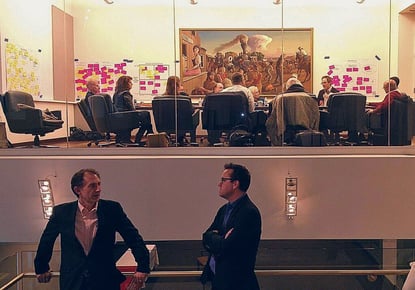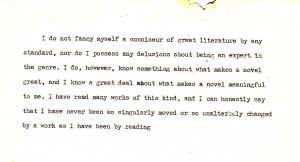 Last week, our priest shared a quote from another priest suggesting a good missionary "takes people where they are." The comment was shared in relation to a Bible account I've always enjoyed where St. Paul, walking the streets of Athens, discovered a place of honor devoted "To an Unknown God." He used this as his point of departure in telling Athenians he was there to reveal to them this unknown God.
Last week, our priest shared a quote from another priest suggesting a good missionary "takes people where they are." The comment was shared in relation to a Bible account I've always enjoyed where St. Paul, walking the streets of Athens, discovered a place of honor devoted "To an Unknown God." He used this as his point of departure in telling Athenians he was there to reveal to them this unknown God.
The quote and story provide a great business strategy lesson for change agents trying to catalyze significant innovation:
Before you do anything, listen and observe.
It's critical to first get a sense of the people you are trying to transform. A great strategic observer will be able to readily detect instances where people desire (or are already leaning toward) a new approach.
Starting your transformation strategy by absorbing people's mindsets and dispositions allows you to structure your change agenda to begin with areas of agreement, not areas of conflict. This strategy allows you to gain credibility, build trust, and typically uncover further insights as others begin to open up and share more personal hopes and concerns. All these inputs allow you to better tailor your message and successfully take people from where they currently are.
This is why smart turnaround people conduct listening sessions and tours before trying to implement huge transitional change. Don't interpret this as suggesting big changes have to be put on hold for extended periods of time. It simply means that observing first will allow you to sequence and implement changes with the greatest likelihood of success.
One of my favorite stories from having watched business turnaround CEO specialist Maury Myers occurred during his first few weeks at our company. It was a corporation in shock, with its first truly significant leadership change in 40 years. People were down in the dumps and wanted something signaling management was in touch with what was happening. At his first town hall meeting, Maury told the corporate office staff he knew the senior management group had been debating adopting an all business casual environment. It made sense he told us, so the next Monday, it was business casual five days a week.
In one move, which cost the company nothing, Maury demonstrated he was listening, was there to rapidly make big changes, and was going to make smart decisions. Despite challenging conditions, and Maury being a very challenging guy at times, it was absolutely the right way to take his audience where it was and start moving forward.
What examples have you seen (or done) in starting change by taking people where they are? - Mike Brown



